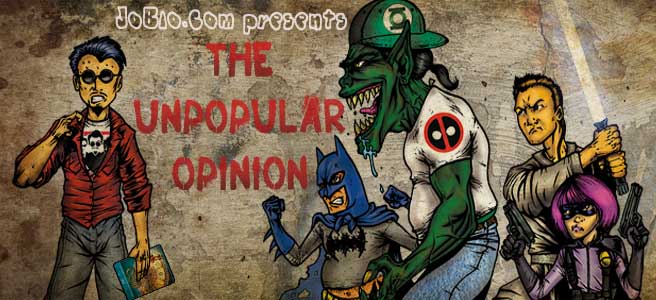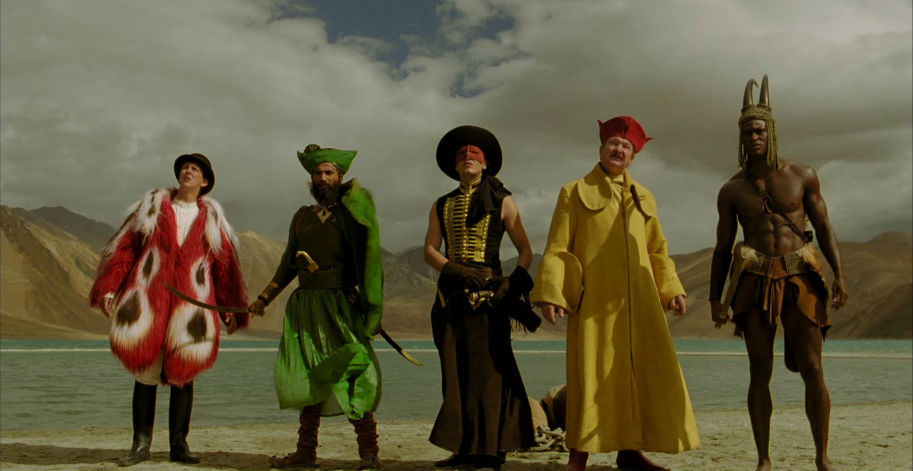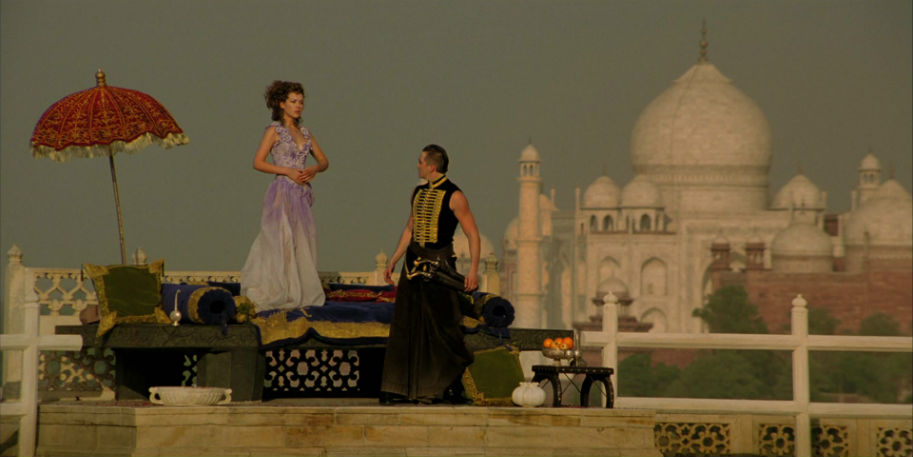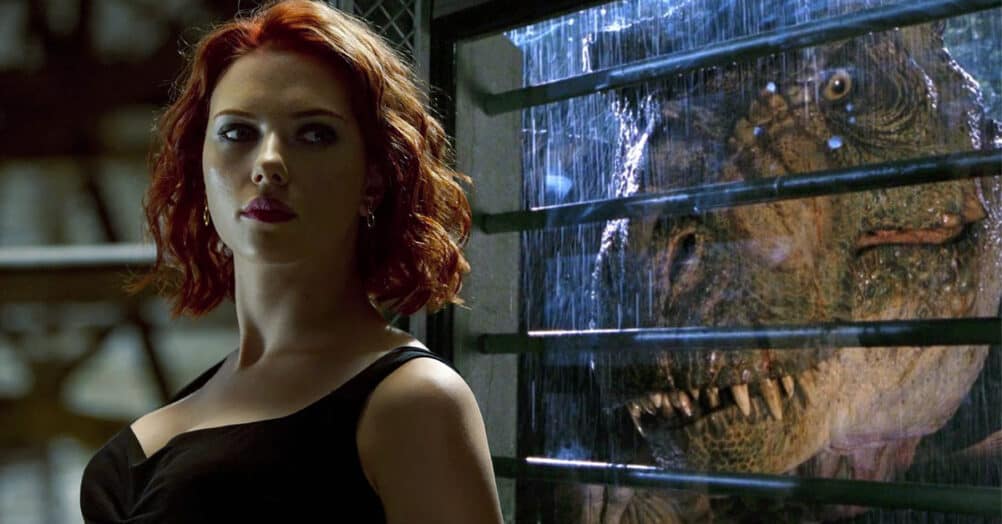Last Updated on August 2, 2021

THE UNPOPULAR OPINION is an ongoing column featuring different takes on films that either the writer HATED, but that the majority of film fans LOVED, or that the writer LOVED, but that most others LOATHED. We're hoping this column will promote constructive and geek fueled discussion. Enjoy!
****SOME SPOILERS ENSUE****
One of my all-time favorite films is THE ADVENTURES OF BARON MUNCHAUSEN. Like many Terry Gilliam films, it was a box office disaster and yet a critical darling. Also like most of Gilliam's films, it found a second life after it's theatrical run thanks to the home market. In the years since, THE ADVENTURES OF BARON MUNCHAUSEN has developed a dedicated cult following which has resulted in special editions and re-releases. Few films can be both failures and successes simultaneously; more often there are films that split audiences and critics so dramatically, that it is left to individual viewers to determine the film's worth. One such film is Tarsem Singh's THE FALL, the spiritual successor to BARON MUNCHAUSEN. Told in a similar style to Gilliam's movie, THE FALL was a box office bomb that made it onto the top film lists of several critics, including Roger Ebert, while being ravaged by many others. The critical and fan consensus is split down the middle when it comes to THE FALL and yet not a single person I have met has hated it. Since I surround myself with film afficionados, I would have to err on the fact that the lambasting THE FALL received was indicative of it's failure. But, THE FALL is one of the best films of the last twenty years and should be recognized as such.
A labor of love, THE FALL was filmed over four years in twenty countries and primarily financed by director Tarsem Singh himself. Tarsem, best known for his cult classic THE CELL and the underrated mythology film IMMORTALS, imbued THE FALL with some of the most surreal and ethereal visuals since, well, Terry Gilliam. Getting his start as a music video director, Tarsem has never quite achieved the mainstream success his skills warrant. While THE CELL may be the best example of his style, THE FALL is by far his best film. Lambasted for being all sparkle and no substance, THE FALL has some shortcomings but it easily is outweighed by sheer originality. There are almost no movies like THE FALL that have ever been made nor are there likely to be many more after. The critical divide over the film allowed it to disappear from the radar of the general public, but I hope this column serves as a way to bring it back and bestow it's rightful place as an exemplary piece of cinema history,

Much of the negativity towards THE FALL is aimed at the lack of a satisfactory story. The plot of the film is fairly basic: a little girl is recouperating in a Los Angeles hospital in the early part of the 20th century. There she meets an injured stuntman who tries to improve her mood by spinning a fairy tale about bandits and an evil governor. The film then shifts to the dazzling story within a story where all of the residents and staff of the hospital play alternate roles. This is incredibly similar to BARON MUNCHAUSEN. THE FALL also forces the viewer to question whether or not the story being told is true or just a figment of the teller's imagination. Because this is a story being told to a young child, there is an innocence and a simplicity to it which Tarsem couples with spurts of violence and adult themes.
Because this film is a fairy tale, there is little in the way of logic or sense in the proceedings with the stuntman telling the story, played by the then unknown Lee Pace. That bare bones narrative allows for Tarsem to play with his unique bag of tricks which blends the world of Hollywood movie with arthouse cinema. Like filmmakers David Lynch, Alejandro Jodorowsky, Terry Gilliam, Terence Malick and to a lesser extent Darren Aronofsky, Tarsem Singh takes the more avant-garde side of making movies and brings it into a movie for wider audiences. It becomes virtually impossible to pull your gaze away from the immaculate costumes, set design, and perfectly composed shots. Any single image from this film could serve as a painting hung on the wall of a museum but that takes away the power that motion pictures inherently have. THE FALL is a masterpiece of composition and framing unlike any film I can easily recall.
With a cast made up of relative unknowns, the bulk of the heavy lifting is done by Tarsem's camera, but Lee Pace holds his own in a way few actors could achieve. At the time, Pace was best known for his role on ABC's short lived Bryan Fuller series Pushing Daisies and was still a way off from AMC's underrated Halt and Catch Fire or his villainous role in GUARDIANS OF THE GALAXY. Pace has the matinee idol good looks that bely a vastly talented actor. Here, he subtly plays the role of storyteller as well as his alter ego as the bandit. Unlike John Neville's over the top portrayal of Baron Munchausen, Pace is a manifestation of Tarsem Singh's artistry and speaks in the stilted dialogue of a man whose words are barely needed to convey what the screen already shows. But, to call that a shortcoming of the script cowritten by NIGHTCRAWLER's Tony Gilroy would be unfair. Every element of this movie was intentional down to the lean script.
The theme of THE FALL is not the power of story but rather the power of imagination. As the stuntman, Roy Walker, conveys his tale to the little girl Alexandria, Tarsem's imagination is what we experience. Had THE FALL been a novel, we would have been left to create the visuals for ourselves and every interpretation would have been unique. Here, Tarsem's visuals are the only interpretation which allows the viewer to interpret the story however we wish. This is just as freeing an experience if you give yourself over to imagine it. It may seem counter-intuitive to imagine a story when watching a film, but to do so is an incredibly rewarding journey. Every element from the score by Krishna Levy to the cinematography by Colin Watkinson places you in an other-worldly dreamscape that is at once foreign and familiar which allows you to pretend for two hours that you are in a place where a story can end happily ever after. Like the light side to the darkness of THE CELL, THE FALL is a movie that can be enjoyed but is far better experienced.

Since THE FALL, Tarsem Singh has yet to release another movie on par with his debut and sophomore efforts. Maybe Hollywood is not ready for such a talent to be set free on a project worthy of his vision but they truly should be. Few films are capable of becoming art as beautifully as THE FALL and yet it was completely overlooked for awards consideration when it was released. It is a confusing and complex film that is at once staggeringly simple, but it is these contradictions that make THE FALL so damn impressive. THE FALL is a film that begs to be analyzed and dissected but also works as art displayed on your television screen. I can think of so many double features that this would pair perfectly with and so many of you that would enjoy it. It is readily available on numerous platforms. So, if you are willing to let your senses be overrun and your imagination run wild, check out THE FALL.



















Follow the JOBLO MOVIE NETWORK
Follow us on YOUTUBE
Follow ARROW IN THE HEAD
Follow AITH on YOUTUBE